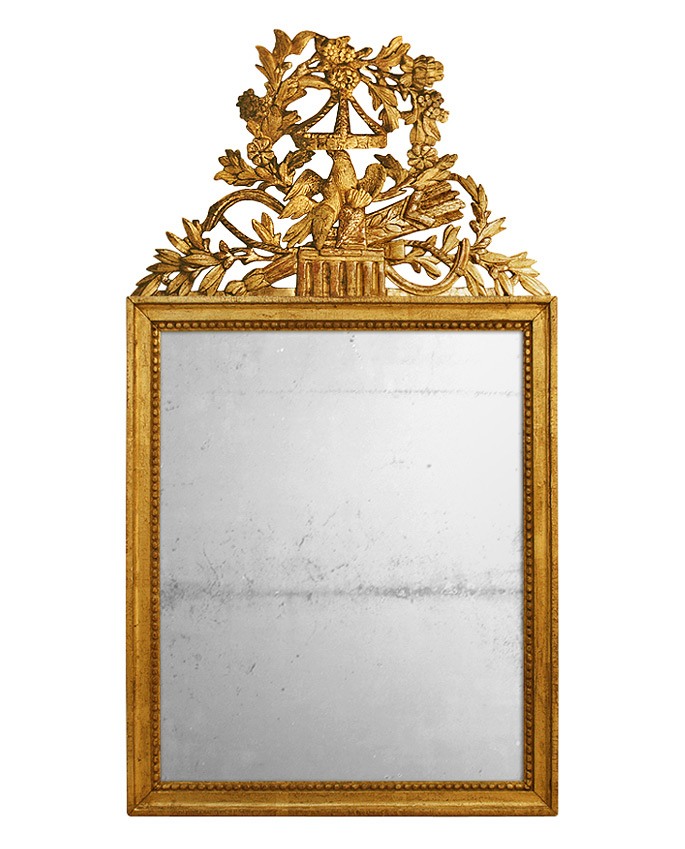1760 – 1789
LOUIS XVI STYLE
Excavations of Herculaneum (1719) and that of Pompeii (1748) mark a return to antiquity sobriety in the Greco-Roman style. This archaeological discovery gave birth to the Louis XVI style. Mme de Pompadour (1721-1764), adheres to this “Greek” style of a new kind, it will gradually impose itself with Marie-Antoinette de Hasbourg (1755-1793), wife of Louis XVI who succeeded her as Ambassador of the Arts.
Artists and craftsmen of the Louis XVI style were able to draw inspiration from Greco-Roman art and nature with dexterity and harmony in proportions that make the Louis XVI style known and appreciated beyond national borders.
Louis XVI style is characterized by its straight lines and the symmetry of the decorations. The frames moldings are always in oak, beech, amaranth or walnut, and European linden for the sculpture.
Ornamentations are inspired by the antique, nature, exoticism: Garlands of flowers, ribbon knots, palmettes, pearls, medallions, foliages, acanthus leaves, olive leaves and laurel, wicker baskets, sickles, bee hives, pastoral, shepherdesses, country scenes, chinoiseries (asian inspiration)…
Carved woods are gilded or painted in a pastel rechampi at gold.
Louis XVI mirror will become an essential object of the decoration of its time.
Lounges and bedrooms in bourgeois and noble residences are decorated with pediment mirrors. Louis XVI style pediment mirror usually has a stylized carved wood knot. We also find pareclose mirrors and trumeau mirrors decorated with ribbons and knots.
It is under the Louis XVI style that the wedding mirrors appear which are part of the bride’s trousseau.
It was towards the end of the reign of Louis XVI that the first stucco framed mirrors appeared with carved wooden parts.
Manufacture of mercury glass mirror is still carried out in the royal manufacture which in the french revolution of 1789 will lose its privileges and monopoly.
Louis XVI style persisted until 1792 by adding revolutionary emblems to it, or was replaced by manufacture “at the Etruscan” announcing the Directoire style.


